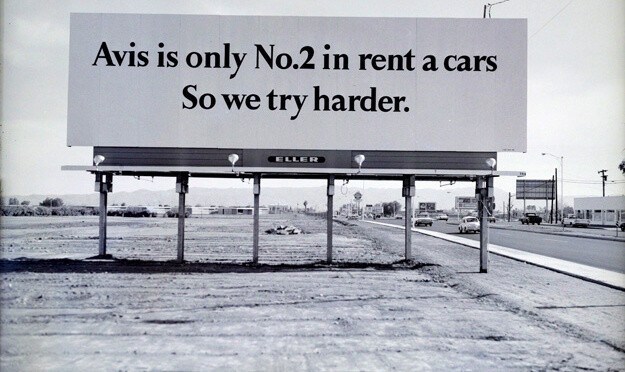Want a brand of true distinction? You’ll need to make its uniqueness and customer benefits crystal clear. And that comes down to two sometimes misunderstood parts of your messaging strategy…
We often get asked about the difference between a brand positioning statement and a unique value proposition, so we’ve put together this handy guide on the specifics.
There are areas of overlap and both have a powerful impact on your messaging strategy. But it’s important to understand the distinction and how, in different ways, both help marketing teams deliver a consistent brand identity.
First, let’s define the terms.
What is a value proposition?
In a nutshell, it’s a concise statement that explains the unique benefits a brand’s products or services deliver for customers.
Why should people buy from you? Why should people choose your products or services over the alternatives? These are the questions that your value proposition should answer quickly and clearly. It lets your customers know they are in the right place and differentiates your business within the marketplace.
A picture-perfect proposition identifies audience pain-points and explains how a product or service resolves them.

For example…
Slack
‘Made for people. Built for productivity. Connect the right people, find anything that you need and automate the rest. That’s work in Slack, your productivity platform.’
At its core, Slack is a messaging app – but the value proposition promises so much more. Increased productivity through automation and fluid connections can be a major boon for time-pressured teams and business owners.
Novo Watch
‘At NOVO we design and manufacture watches made from physical materials saturated with history. Whether it’s cleats an athlete wore while earning their spot in the MLB or a branding iron used for 50 years on a family ranch, we’re able to infuse meaningful materials into every timepiece we craft ensuring it has individuality and tells your story for generations.’
There are many companies making watches. So what makes Novo watches unique? They use materials with a story behind them. And as the old marketing adage goes: ‘facts tell, stories sell’.
What is brand positioning?
This is where you contextualise your value proposition within the wider marketplace.
How do you want to be compared to your competition? An element of this is establishing differentiation – making it crystal clear to customers and prospects what your offer is, how you will deliver it and how it’s different to everyone else out there. Define the market-beating, audience-winning, decision-prompting truth of your proposition with consistency and you’ll be off to a great start.

A positioning statement can help keep everyone focused in the same direction (and on the same target audience). It can be used within external comms but it’s primarily an internal description of how you’d like to be seen by your customers and prospects. All marketing decisions and campaigns should be checked against this statement to make sure they align.
For example…
Patagonia
Patagonia’s brand position is built around its core social values – environmental activism and social responsibility. This is a strong example of a brand that uses its positioning statement externally to show authentic commitment to its values. Policies such as ensuring fair treatment and liveable wages to all workers and donating 1% of sales to environmental causes resonate with people concerned about environmental sustainability. A masterful way to carve out a space in your customer’s mind.
Apple
Apple has positioned its brand towards the creative space. Openly advocating for creativity, innovation and excellence in everything it creates, Apple imbues their products with the same spirit. And it’s worked beautifully. A dedicated fanbase has proven consistently loyal to Apple, using the brand to show that they too are creative and innovative.
More recently, Apple has responded to concerns around digital privacy by incorporating this into their brand position. A clever move to showcase their commitment to superior products over secret profit-making.

Value proposition, meet brand position: what happens when they work in harmony
These key benefits will be waiting when you get your value proposition and brand positioning statement right.
Tangibility
The value for your customers becomes tangible and easier to articulate.
Every company can claim to be the best / cheapest / fastest / highest quality / most unique (delete as appropriate). If you don’t also include the ‘why’ then you will be getting lost in the crowd. There’s also the verbatim effect – people don’t remember the specifics, just the gist of anything they have heard or read. This is why vague concepts like being ‘the most unique watch ever’ don’t stick in the mind but ‘a watch made from an old railway track’ just might.
Bringing value propositions and brand positioning together can help marketing teams define and shout about what they are and what makes them different.
Focus on the audience
While it’s often tempting to write a long story about how your brand came to be, the focus should be on value to your customers. Bringing together the value you can offer and your position in the market helps shift marketing team priorities. Identify what your customers respond to and care about – then position your brand in response.
It also offers a standard to check all marketing decisions against – keeping brand consistency and staying relevant to your audience.
Counter the competition
Many companies do the same thing – but they don’t do it all in the same way, and don’t have the same ethos, values or target audiences. Brand positioning helps highlight what a brand does differently or better. Making that more prominent in your communications will help your brand stand out and present what it offers as a clearly and distinctly.
There are even plenty of brands that play off classic rivalries or spin the context to their advantage – take Coca-Cola vs Pepsi, Burger King vs McDonalds or this beauty from Avis:

Need a hand with your messaging strategy?
See how we updated the brand positioning of one of the highest ranked business schools on the planet.



